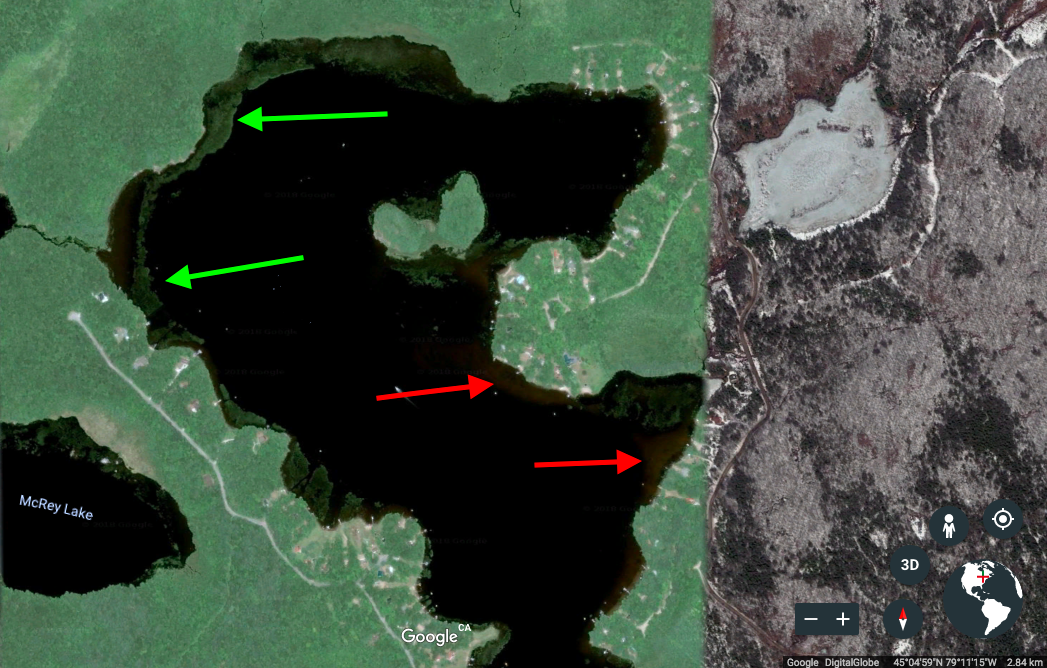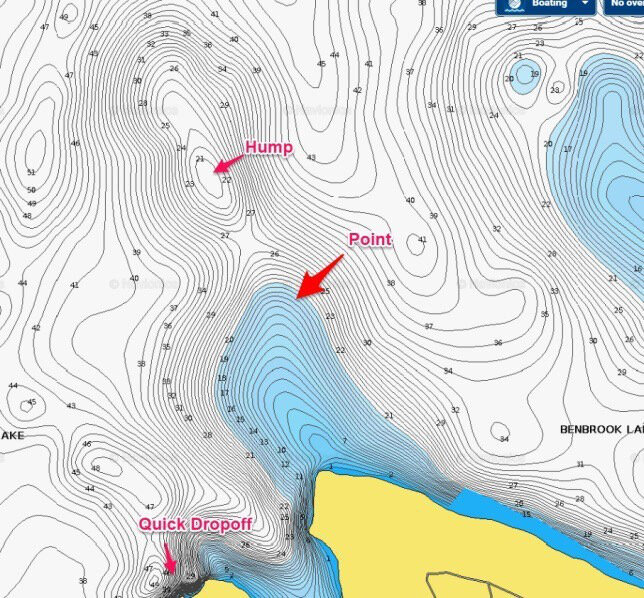Exploring new water can be extremely difficult and frustrating even when fishing for species that you’re familiar with. Taking the time to properly research lakes and rivers before you hit the water can greatly improve your success and can help make new water seem much less intimidating.
Whether you are fishing tournaments or exploring new spots for the weekend, this article will identify three crucial, yet relatively simple, steps for researching new water that will not only increase your success but make the experience much more enjoyable.
1) Stocking/Netting Reports
Before looking at maps or at online forums, the first step I always take when researching new water is looking at stocking and netting reports.
Of the two, stocking reports are often the first place I go. Here in Ontario, Fish On-Line is one of the best resources you can use and is extremely easy to navigate. Sites like this allow you to see exactly what fish exist in the lake, what fish are stocked, as well as the year the stockings took place.
These resources will also tell you whether the fish that were stocked were yearlings or fingerlings, giving you a better idea of what size of fish have the potential to be in the lake. If the lake was stocked for the first time this year with fingerlings, for example, it might be best to let this lake rest for a few years. If it is year five of a consecutive stocking of yearlings, on the other hand, there is a good chance that mature fish have been surviving in the lake.
Here is an example of what this tool looks like:


In addition to stocking information, netting reports can be an extremely useful resource as well. These reports are often put out by the government or by universities doing surveys, reporting on the size and abundance of certain fish species within a water body. Though much harder to come by, these reports can be great tools for locating where larger fish could be concentrated and how many are present in a given year, so it is always worthwhile to check local government databases and university libraries for this information.
2) Mapping
Once you have selected your lake, the next step is to begin looking at maps. Google Earth is often a great place to start, allowing you to quickly determine how far the lake is from your location, how accessible it is, and where the boat launches are located. Once you have established the logistics, Google Earth can also allow you to look for more specific and useful details that will help determine how and where you will approach fishing the lake.
As seen below, Google Earth can help identify both shallow points as well as weed growth through colour changes. Identifying this potential structure for fish can help save time on the water before you even arrive at the lake. This information may also inform your decision on which baits to bring when fishing the lake, such as weedless or topwater baits in heavy weed growth or lipless crankbaits for hard shallow bottoms.

NOTE:
Thanks to our long winters, Google Earth imaging often shows our lakes when they are iced over. If this happens on the lake you are trying to look at, try other satellite imaging software. Fish On-Line often provides surprisingly good satellite imaging from my experience.
Once you have a basic understanding of the lake’s composition and accessibility, it is time to dive deeper and look at the structure you can’t see from the air. Though the structure you’re looking for is, of course, dependant on the species of fish you are targeting, three features remain relatively universal for most species of fish: Points, Humps, and Ledges.

Although there are exceptions, places that hold fish consistently tend to have some sort of irregularity that make them stand out from the surrounding area. While some of these irregularities, such as drowned Christmas trees or submerged logs, are impossible to find without being on the water, many of the most important features such as extended shallow stretches (points), quick rises in depth (humps), as well as quick drops (ledges) can all be identified on a topographic map, as seen above.
As you explore lakes on apps such as Navionics, you can often use these three bottom irregularities to plan entire days or trips, eliminating barren or shallow sections of lakes and even eliminating whole bodies of water if the charts are unfavourable or simply unavailable.
In this latter case, investing in a fish finder with mapping technology, such as the Garmin Echomap, is a good idea. This is especially beneficial for those who frequently fish in more remote areas of the country as their software will allow you to chart the lake as you fish it and can give you a much better idea of what the bottom composition looks like when out on the water.
3) Baitfish- Match The Hatch
The final thing that should be identified before exploring a new lake is the type of baitfish that exist in the body of water you are planning to fish. This is a very important step as it will influence the colour and presentation of bait that the fish will be willing to take.
This, once again, may require further research into the bait if you are unfamiliar with the species in order to best judge where these baitfish will most likely be located. Bait can range from minnows, to crawfish, to leeches; all of which require different techniques to effectively “match the hatch”. Baits such as jerkbaits (as pictured below), for example, are great for mimicking wounded baitfish, whereas lipless crankbaits and jigs can mimic craws and smaller fish depending on your colour selection.


Bait behaviour is another thing to consider when heading to a new lake as it can drastically affect how and where the fish will be feeding. When fishing for Lake Trout, for example, a lake full of Cisco will likely have the fish suspended in the column as they look to break up the schools of bait. This makes fast and versatile baits such as jigging spoons much more suitable as they are able to quickly rise to the desired depth and mimic the food source of the fish. Lakes with high populations of bottom-feeding baitfish, on the other hand, will likely see the fish feeding just above the bottom, making a heavy, bottom-bouncing bait such as a tube jig much more favourable.
In Summary:
Spending time preparing for a day on the water is especially necessary when exploring new lakes. This preparation can save you time, money, and even space in your boat by informing your decisions on what to bring, where to go, and how to fish before you even hit the water. These three steps, although simple, can make a huge difference in your day and can be the difference in where you stand in a tournament, or simply the enjoyment you get out of a day on the water.







2 Responses
nd_user – Nice Article! How to Read a Fishfinder – Side Scanning Sonar (Part 2)
The most important tool out on the water is a Navigational Map. They can be found at this link.
https://www.gpsnauticalcharts.com/main/ca/ontario_lakes-ontario-lakes-nautical-charts-folio.html